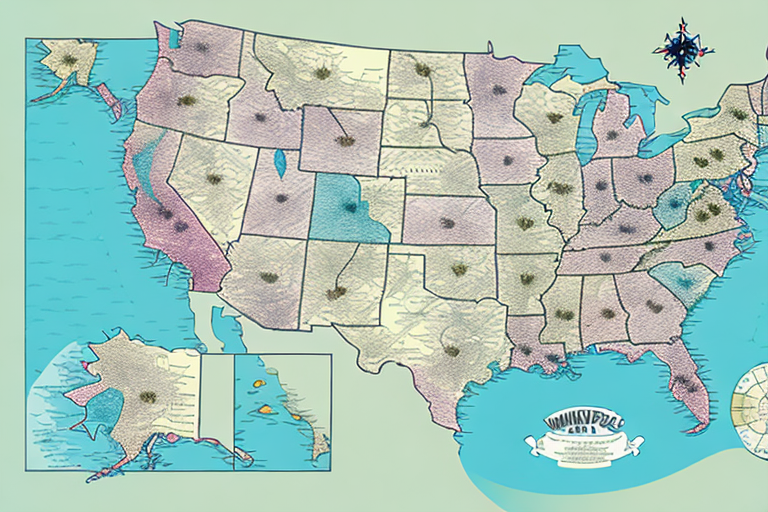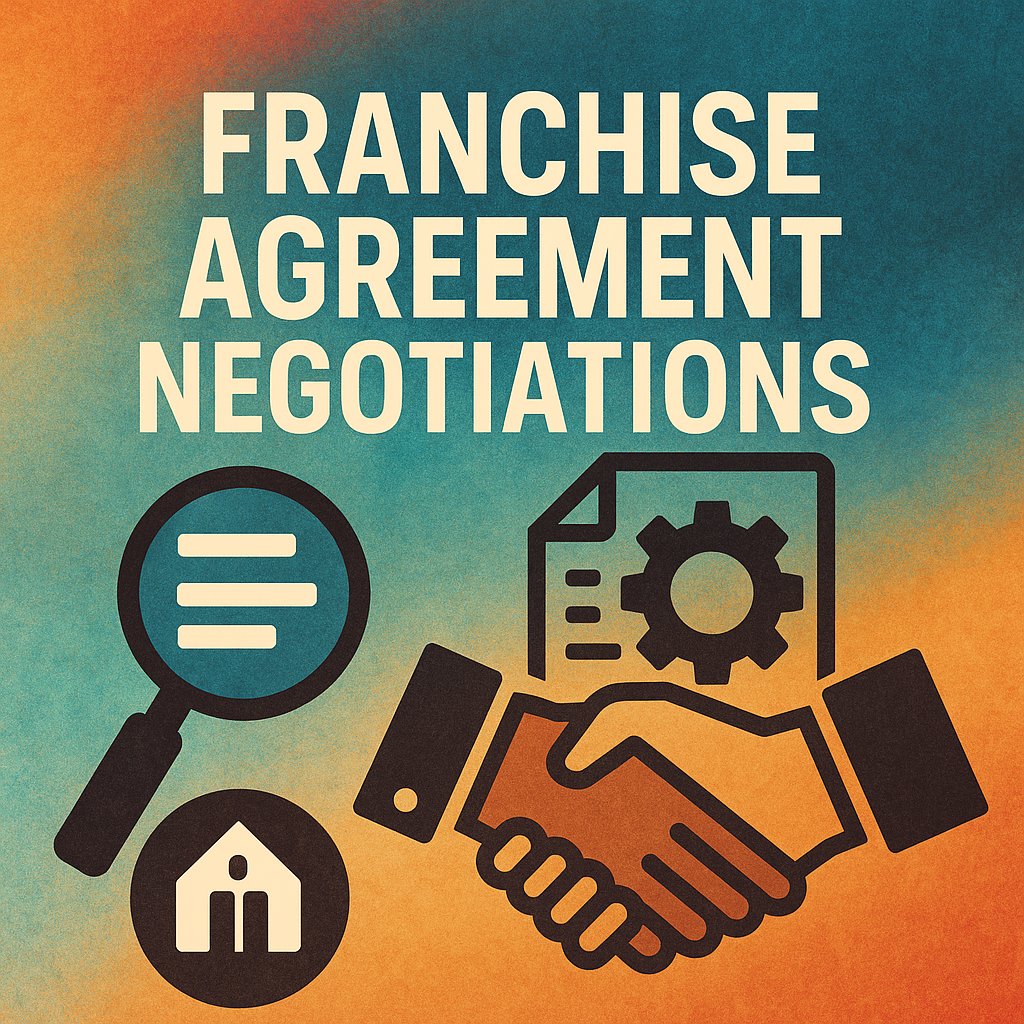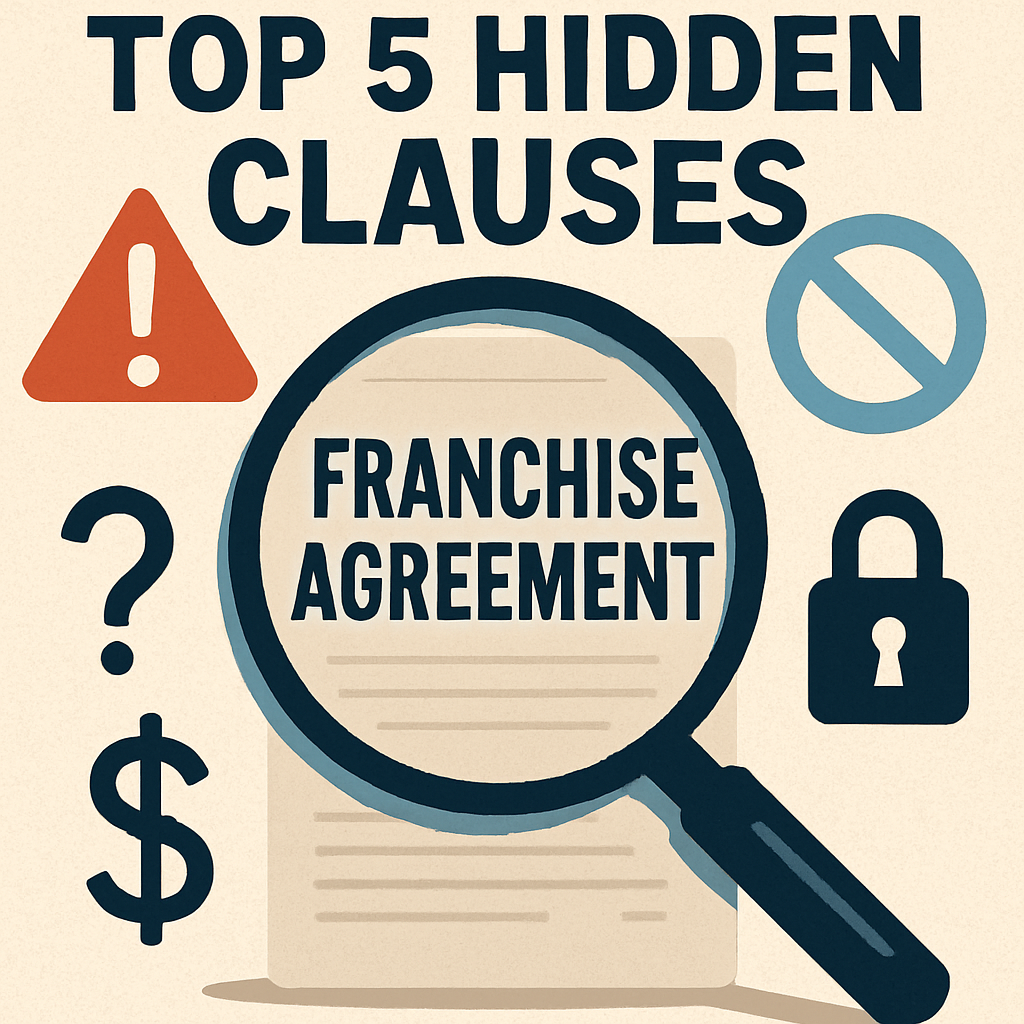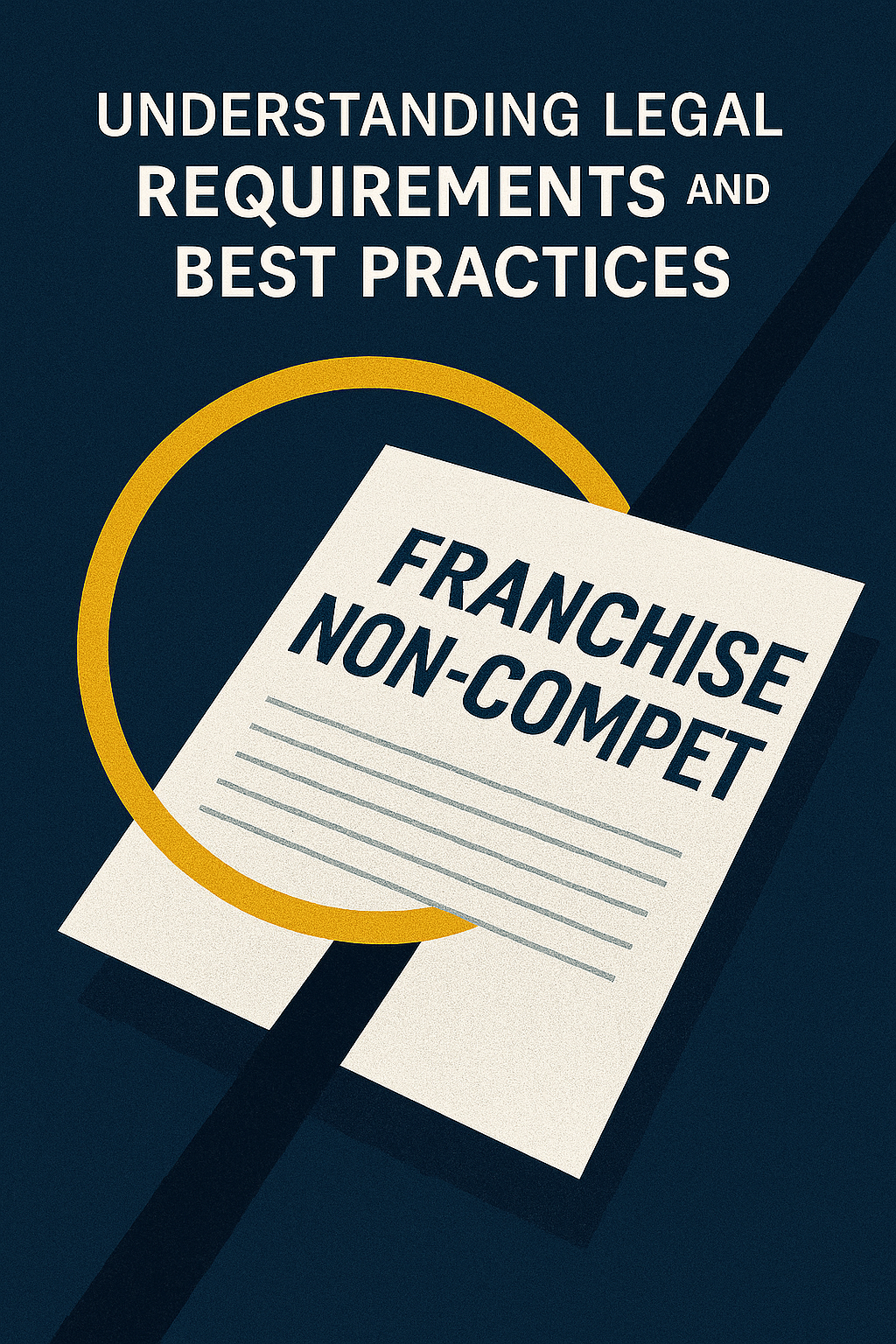Are you wondering if your franchise will have exclusive territories, or can other franchisees open near my location? This guide will clarify how franchise territories work and what to expect regarding territorial exclusivity and competition, specifically addressing the question: are there exclusive territories or can other franchisees open near my location?
Key Takeaways
Franchise territories define operational boundaries, providing franchisees with exclusive rights to a market area and minimizing internal competition.
Thoroughly reviewing franchise disclosure documents (FDD) is essential to understand territorial rights, protections, and the implications of exclusivity before signing any agreements.
Negotiating clear terms regarding territory boundaries and exclusivity can help franchisees secure a competitive advantage and ensure sustainable business growth while preventing market overcrowding.
Franchise Territories Explained: Are There Exclusive Territories or Can Other Franchisees Open Near My Location?

Franchise territories are crucial as they delineate operational areas for franchisees, minimizing conflicts and ensuring equitable market opportunities. When you enter into a franchise agreement, understanding the franchisee’s territory you’re granted is paramount. This territory defines your operational boundaries, allowing you to focus your marketing efforts and resources effectively.
An exclusive territory guarantees that the franchisor will not open other franchises within a specified area, providing you with a competitive advantage. This territorial exclusivity is often a key component of franchise agreements, ensuring that your franchise location is protected from direct internal competition. This protection allows you to build a strong customer base and establish a foothold in your market without worrying about another franchisee infringing on your territory.
Clearly defined franchise territories help prevent conflicts and provide fair market opportunities for franchisees. A protected territory allows for efficient allocation of marketing resources, enabling you to tailor efforts to local needs. This strategic advantage can be the difference between thriving and merely surviving in the competitive world of franchising.
Introduction
Grasping franchise territories impacts business operations and growth potential. Unclear boundaries and protections can put you at a disadvantage in the marketplace.
Franchise territories affect many aspects of your business, from where you can establish your location to how you can market your services. The boundaries of your territory can determine your customer base, influence your marketing strategies, and ultimately, shape your business’ success. Clear boundaries help in planning and avoiding conflicts with other franchisees.
This guide explores the definition of franchise territories, the benefits of exclusivity, and the methods for establishing boundaries. We also discuss legal aspects and strategies for thriving near other franchisees. Our goal is to equip you with knowledge for informed decisions, ensuring business growth and prosperity.
Defining Franchise Territories
Defining territories minimizes conflicts and ensures equitable market opportunities. At its core, a franchise territory is a geographic area in which a franchisee is authorized to operate. This area is designed to provide the franchisee with enough market potential to be profitable while preventing encroachment from other franchisees.
Franchise agreements often include territorial protections to minimize competition within a designated area. This means that within your defined territory, you won’t face competition from another franchisee of the same brand. This protection allows you to focus on building your franchise businesses without the fear of internal competition eroding your customer base.
Protected territories prevent the franchisor from opening other franchises in a specified area, offering a competitive advantage. This clear delineation of operational areas helps franchisees allocate their resources more efficiently and tailor their marketing strategies to the specific needs of their local market.
Exclusive Territories in Franchising

Exclusive territory agreements prevent franchisors from establishing another franchise within a specific region, granting exclusive marketing rights. Exclusivity may be based on geographic boundaries or population size, ensuring a sufficient customer base without direct competition.
Some franchisors use population size instead of geographic boundaries to ensure a larger client base without direct competition. This approach benefits densely populated areas where geographic boundaries may not reflect market potential.
Exclusive territory agreements may allow new locations if sales thresholds are not met. This maintains market presence while allowing franchisees to thrive. However, it also places a responsibility on franchisees to meet performance standards to retain their exclusive rights.
Carefully review the franchise disclosure document (FDD) to understand territory and protections. The FDD provides essential details on the type of territory you will receive, the boundaries, and any conditions that might affect your exclusivity. This thorough understanding is crucial before signing the franchise agreement.
Methods to Define Franchise Territories
Territories can be defined by radius measurements, ZIP codes, municipal boundaries, and natural features. Each method has advantages and can be chosen based on franchise system needs. For instance, using ZIP codes can provide clear and stable boundaries that are easy to communicate and understand.
Using local demographics to define territories may not suit every franchise due to varying customer behavior. Demographic data provides valuable insights but requires understanding the local market. Isochrone mapping considers travel times and offers a more accurate representation of customer accessibility.
Defining territories by driving distance lacks the precision for formal agreements. This method may not consider travel patterns or barriers like highways or rivers. Some franchisors blend customer data and isochrone mapping to analyze territories.
Isochrone maps show potential customer capture based on travel times. This method can provide a more practical understanding of market potential, helping franchisors and franchisees make informed decisions about territory boundaries.
Franchise Agreement and Territorial Rights
A franchise agreement outlines the business scope and territorial rights. These rights protect the franchisee’s business interests and ensure a fair chance at success.
Exclusive territories prevent franchisors from opening competing outlets within that area. This exclusivity allows franchisees to build a customer base without internal competition. It also provides a clear framework within which franchisees can plan their marketing and operational strategies.
Prospective franchisees should carefully review agreements to understand legal terms and territory attractiveness. A prospective franchisee should examine the franchise disclosure document (FDD) to ensure territorial rights and protections are clear.
Factors Influencing Franchise Territory Boundaries
Franchisors conduct market analysis considering population density, income levels, and customer demographics to define boundaries. This analysis ensures sufficient market potential for profitable business.
Research market saturation and competition before negotiating territory size for sustainability. Understanding local market conditions aids in making informed decisions about territory size and boundaries. A well-prepared franchisee can use demographic data to justify a request for a larger territory.
Geographic elements like rivers and roads influence territory delineation. Natural boundaries affect accessibility and customer behavior, important considerations for defining territories. Local conditions like traffic flow and accessibility are considered when establishing territory limits.
Periodic adjustments accommodate market changes and maintain equitable growth opportunities. As markets evolve, franchisors must revisit and potentially redefine boundaries to ensure fair chances of success.
Impact of Nearby Franchisees on Your Business

Defined territories enhance customer loyalty and focused marketing, positively impacting growth. Clear operational boundaries allow tailored marketing strategies for the local market.
Franchisees can leverage the synergy of multiple units operating nearby. Proximity leads to shared marketing and increased brand visibility, benefiting all involved. Direct competition from nearby franchises can pressure pricing and impact profit margins.
Overcrowding can diminish customer bases for each franchisee. Franchisees should monitor market saturation and work with franchisors to ensure sustainable franchise numbers.
Strategies to Thrive Despite Nearby Franchisees
Nearby franchisees may create competitive advantages through shared marketing and outreach. Collaborating with other franchisees leverages collective marketing to attract customers and increase brand recognition.
Social media marketing enhances communication and visibility for a franchise. Engaging with the community via social media builds a loyal customer base and differentiates your franchise. Local advertising campaigns help franchisees engage with the community and attract customers.
Researching competitors’ strategies can give franchisees a marketing edge. Staying informed about nearby franchisees’ actions helps adjust strategies to stay competitive and capture more market share.
Legal Aspects of Franchise Territories

Franchise disclosure documents (FDD) provide details on territory type, protections, and limitations. These documents must clarify if a franchise agreement provides an exclusive territory and its definition. This clarity is crucial for franchisees to understand their rights and the extent of their operational boundaries.
Franchise agreements should include non-compete clauses restricting the franchisor from establishing competing outlets in the exclusive territory. These clauses protect investment and ensure operation without internal competition. Exclusive territory agreements may allow additional locations if sales targets are not met.
Disputes may arise over territory changes initiated by the franchisor due to market performance or demographic shifts. To protect interests, document territorial rights violations and seek legal counsel if necessary. Legal compliance is essential to avoid disputes and maintain equitable competition.
Understand the franchisor’s strategy and support when negotiating territory agreements. This helps navigate legal complexities and ensures territorial rights protection. Be aware of potential online sales restrictions that might affect territory reach.
Negotiating for Exclusive Territories

Negotiate specific terms regarding boundaries and conditions of territorial rights before signing any agreement. Clarify exact boundaries during negotiations to avoid overlap with other franchisees. This prevents future conflicts and ensures a distinct and protected operational area.
Proactively negotiate options on adjacent territories when discussing exclusive territories. This option offers a strategic advantage, allowing expansion without unexpected competition. Ensure the franchise agreement includes clear terms on territorial exclusivity and protection.
Thoroughly negotiating and understanding territorial terms secures a competitive edge and builds a successful business. This proactive approach mitigates risks and ensures support and protection for thriving in the designated market.
Common Challenges with Franchise Territories
Awarding too many franchises in one area can lead to challenges. Insufficient customers can make businesses struggle to thrive. Overcrowding diminishes customer bases, making profitability difficult for individual franchises. This underscores the importance of market analysis and strategic planning in defining territories.
Territory protection can limit growth, especially in smaller markets. Exclusive territories provide benefits but can restrict expansion in limited markets. Franchisees must balance territorial protection benefits with potential growth limitations.
Overcome these challenges by actively engaging with the franchisor and negotiating clear territorial agreements. Open communication and collaboration can address market saturation and ensure sustainable growth. By working together, franchisees and franchisors can create a balanced and equitable franchise system.
Summary
In summary, understanding franchise territories is crucial for franchisees to maximize their business potential and avoid conflicts. Clearly defined territories provide a competitive edge, allowing franchisees to focus their marketing efforts and build a loyal customer base. Exclusive territories offer protection from internal competition, ensuring that franchisees can operate effectively within their designated market.
Key takeaways for franchisees include the importance of negotiating territorial rights, understanding the legal aspects of franchise agreements, and being aware of factors influencing territory boundaries. Franchisees should also consider the impact of nearby franchisees and adopt strategies to thrive despite close proximity to other units.
By thoroughly understanding and navigating the complexities of franchise territories, franchisees can secure a solid foundation for their business. With careful planning, strategic negotiation, and proactive engagement with franchisors, franchisees can achieve long-term success and growth in their respective markets.
Frequently Asked Questions
What are franchise territories?
Franchise territories are specific geographic areas assigned by franchisors where franchisees can operate, designed to reduce conflicts and promote fair market access. This arrangement fosters a cooperative environment for franchisee success.
How do exclusive territories work?
Exclusive territories grant franchisees the right to operate in a specific area without competition from other franchisors. This arrangement helps protect their market position and customer base.
What should I look for in a franchise agreement regarding territories?
It’s essential to assess the territorial rights and protections in the franchise agreement to ensure you have exclusivity and understand any conditions that may impact your territory. Thoroughly reviewing the franchise disclosure document (FDD) will help clarify these important aspects.
How can I thrive with nearby franchisees?
To thrive alongside nearby franchisees, focus on shared marketing efforts and utilize social media for collaborative promotion. By understanding your competitors’ strategies and launching targeted local advertising campaigns, you can differentiate your business and maintain a competitive edge.
What legal aspects should I consider?
It’s crucial to understand the legal implications of territorial rights, including non-compete clauses and exclusivity conditions. Reviewing the Franchise Disclosure Document (FDD) with legal counsel will help ensure compliance and protect your interests.







